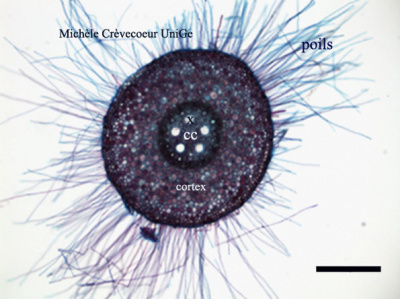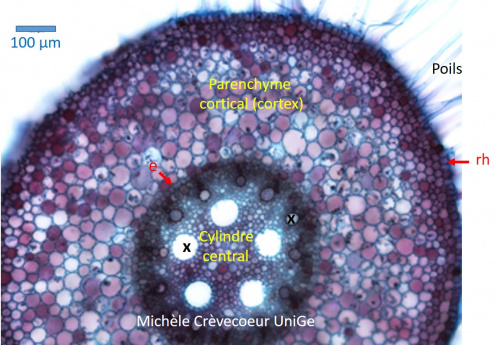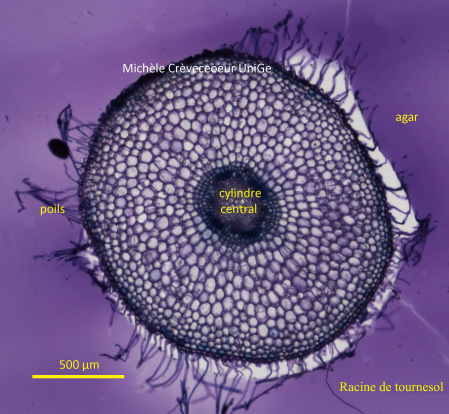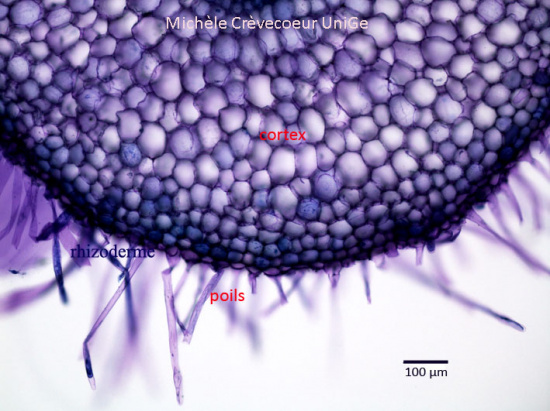Free - hand sectioning of roots with a razor blade
It is possible to get useful information on the organization of plant tissues by staining fresh sections made with a razor blade without any preparation (i.e., no fixation no embedding). This is possible for roots and stems, cylindrical organs, and more difficult for leaves that are flat, thin organs difficult to be hold. With a razor blade of quality, with patience, with habitability and with a little luck we obtain sections of good quality. The advantage of this technique is that it is fast and easy.
Two examples are shown on this page with cross sections through primary roots of mays (monocotyledon) and sunflower (dicotyledon).
1st example: cross sections through a primary root of mays
Below : germinating Zea mays seedling with the primary root and the region with root hairs close to the tip (approximately at 2 cm) where cross sections are made. The sections are stained with Toluidine Blue.

Cross section through the root hairs zone.

We distinguish a small center cylinder (cc) and an extensive cortex. The density of hairs, outgrowths of epidermis cells, is high.
Higher magnification view of another cross section

The cortex consists of polygonal cells and its innermost layer is endodermis (red arrow; e). The metaxylem elements are large and localized towards center of the central cylinder. Protoxylem is located towards the periphery.
e: endoderme; rh: rhizoderme; x : xylème
A section through another root. x xylem; protoxylem (white arrow) ; rh : rhizodermis; cc: central cylinder; end: endodermis.
In this section the pericycle is apparent below endodermis and consists in a monolayer of small cells.

Characteritstics of these cross sections that correspond to a root: small central cylinder, extensive cortex (cortical parenchyma) with endodermis, xylem in alternance with phoem. The high number of xylem and phloem poles is a characteristic of a monocotyledon root.
See also the page « root anatomy »
2nd example: cross section through a primary root of sunflower.
Below : seedling of sunflower with root emerging from the seed. The sections have been made in the region of root hairs from which a segment 1cm long was embedded in agar to facilitate holding and sectioning of the specimen. The sections have been stained with toluidine blue.

Micrograph of a cross section in the region of root hairs.

Part of the section at higher magnification

The characteristics of a young dicotyledon root are recognizable: an extensive cortex and a small central cylinder. Numerous root hairs are seen at the level of epidermis. See also the page root anatomy.